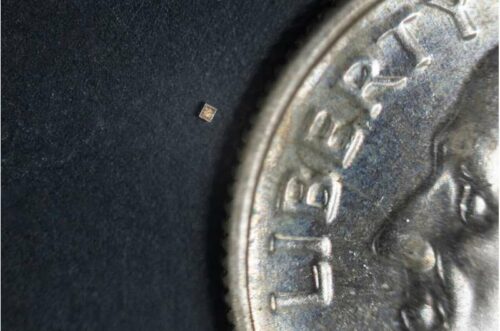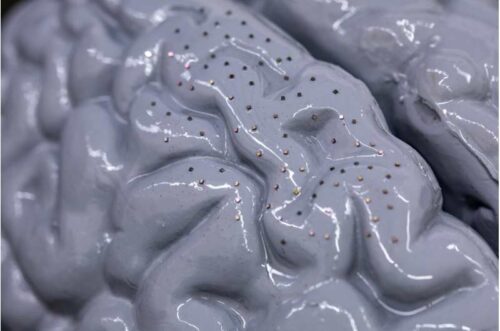With their energy-efficient design and scalability, these microsensors hold immense potential for advancing healthcare and environmental monitoring.

The team led by Brown University engineers has developed tiny microelectronic chips that could revolutionize wireless communication networks. These chips are no larger than a grain of salt and can efficiently transmit, receive, and decode data in real-time. This paves the way for their integration into wearable devices or implantation in the human body.
The silicon sensors within these chips are designed to mimic the way neurons in the brain communicate through spikes of electrical activity. By detecting specific events and transmitting data as short bursts of electrical spikes, these sensors conserve energy and bandwidth. “The sensors would not be sending out data all the time—they’d just be sending relevant data as needed,” explained Jihun Lee, a postdoctoral researcher at Brown and the study’s lead author. One key advantage of this system is its scalability. Traditional sensor communication networks require perfect synchronization, which can be challenging to achieve. However, the novel radiofrequency transmission scheme used in this study allows each sensor to operate independently, avoiding the need for coordination with a central receiver.

The potential applications of this technology are vast, particularly in the field of biomedical sensors. “The most demanding environment for these sensors will always be inside the human body,” said Arto Nurmikko, a professor in Brown’s School of Engineering and the study’s senior author. The development of these microsensors could lead to advancements in monitoring physiological activity across various areas of interest in medicine. These sensors also stand out for their energy efficiency. External transceivers supply wireless power to the sensors as they transmit data, eliminating the need for a direct power source or battery. This feature makes them versatile for use in different environments.
The research builds on previous work from Nurmikko’s lab, which introduced a neural interface system called “neurograins.” The current study demonstrates the system’s efficiency and potential for scalability, with successful lab tests involving 78 sensors and simulations showing the possibility of decoding data from around 8,000 hypothetically implanted sensors in primate brains. The team aims to optimize the system for reduced power consumption and explore broader applications beyond neurotechnology. This breakthrough marks a significant step forward in the development of wireless microsensor technology, with implications for various fields, including healthcare and environmental monitoring.






